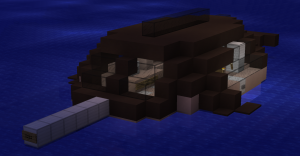Narwhals: Difference between revisions
No edit summary |
mNo edit summary |
||
| Line 5: | Line 5: | ||
{{!}} colspan="2" style="text-align:center"| [[File:Narwhal.png|300px|center|]] | {{!}} colspan="2" style="text-align:center"| [[File:Narwhal.png|300px|center|]] | ||
{{!}}- | {{!}}- | ||
{{!}} colspan="2" style="text-align:center"|'' | {{!}} colspan="2" style="text-align:center"|''A Narwhal Sighting in the Western Ocean'' | ||
{{!}}- | {{!}}- | ||
{{!}} {{#if:{{{Discoverer|}}}|'''Discoverer''': | {{!}} {{#if:{{{Discoverer|}}}|'''Discoverer''': | ||
Revision as of 03:27, 6 January 2017
| Narwhals | |
| A Narwhal Sighting in the Western Ocean | |
| Discoverer: | Astrobolt |
| Discovered: | December 2016 |
| Habitat: | Western Ocean |
| Kingdom: | Animalia |
| Phylum: | Chordata |
| Class: | Mammalia |
| Order: | Artiodactyla |
| Family: | Monodontidae |
| Genus: | Monodon |
| Species: | monoceros |
Monodon monoceros is a rare species more commonly known as the narwhal. It is only known to live in the western ocean, as no other sightings have been confirmed. It feeds on small sea creatures such as plankton, which bear a strong resemblance to coal. Narwhals are known to have a single, long horn in the front of their head.

